Application of Annona glabra L. (Annonaceae) in the area of health, chemical composition and biological activity
Abstract
This review article aimed to present the knowledge accumulated so far about the species Annona glabra L. (Annonaceae), its applicability in the health area, chemical composition and biological activity. The selection of articles took place through different bibliographic search platforms, such as Annual Reviews, Europe PMC, Google Scholar, Indian Journals, PubMed, ResearchGate, SAGE journals, Scielo, ScienceDirect, Scientific Reports, Semantic Scholar, Wiley Online Library and J- STAGE The scientific literature presents studies on the species A. glabra present promising data on anticarcinogenic activities, inhibition of carcinogenic cells, chronic lymphocytic leukemia and mitochondrial complex I, antioxidants, antirheumatic, emollient, significant inhibition of HIV replication in H9 lymphocytes and inhibition of reverse transcriptase, antimicrobial, antifungal, insecticidal, vermicide and antiparasitic. Phytochemical studies derived from extractions of different parts of the plant revealed the presence of flavonoids, terpenoids, glycosides, steroids, saponins, tannins, anthraquinones and acidic compounds. The species has properties related to traditional medicine, being used in the Chinese, Japanese and Mexican health systems. The understanding of the species and its compounds with anticarcinogenic activity is still poorly understood and unfortunately no study has reached the clinical testing stage. This study sought to be a source of stimulus for further research addressing the biological activity, in vitro and in vivo studies, of the different floral parts of A. glabra.
Downloads
References
Amarasinghe, L. D., Wickramarachchi, P. A. S., Aberathna, A. A. A. U., Sithara, W. S., & De Silva, C. R. (2020). Comparative study on larvicidal activity of green synthesized silver nanoparticles and Annona glabra (Annonaceae) aqueous extract to control Aedes aegypti and Aedes albopictus (Diptera: Culicidae). Heliyon, 6(6). https://doi.org/10.1016/j.heliyon.2020.e04322.
Anh, H. L. T., Hien, N. T. T., Hang, D. T. T., Ha, T. M., Nhiem, N. X., Hien, T. T. T., Kiem, P. V. (2014). Ent-Kaurane diterpenes from Annona glabra and their cytotoxic activities. Natural Product Communications, 9(12), 1681–1682.
Balbach, A. (1995). Book: Plants Heal (1a). São Paulo, Brazil: Full life. ISBN 19951410.
Campbell, D. G., Stone, J. L., & Rosas, A. (1992). A comparison of the phytosociology and dynamics of three floodplain (Várzea) forests of known ages, Rio Juruá, western Brazilian Amazon. Botanical Journal of the Linnean Society, 108(3), 213–237. https://doi.org/10.1111/j.1095-8339.1992.tb00240.x.
CNCFlora. (2012). Annona glabra in Red List of Brazilian flora version 2012.2 National Center for the Conservation of Flora, November 22, 2020. http://cncflora.jbrj.gov.br/portal/pt-br/profile/Annona%20glabra.
Chang, F. R., Yang, P. Y., Lin, J. Y., Lee, K. H., & Wu, Y. C. (1998). Bioactive kaurane diterpenoids from Annona glabra. Journal of Natural Products, 61(4), 437–439. https://doi.org/10.1021/np970497z.
Chang, F. R., Chen, C. Y., Hsieh, T. J., Cho, C. P., & Wu, Y. C. (2000). Chemical Constituents from Annona Glabra III. Journal of the Chinese Chemical Society, 47(4B), 913–920. https://doi.org/10.1002/jccs.200000124.
Chatrou, L. W., Rainer, H., & Maas, P. J. M. (2004). Flowering Plants of the Neotropics. Princeton University Press. New York: Smith, N. et al. ISBN 978-0-691-11694-5.
Chatrou, Lars W., Pirie, M. D., Erkens, R. H. J., Couvreur, T. L. P., Neubig, K. M., Abbott, J. R., Chase, M. W. (2012). A new subfamilial and tribal classification of the pantropical flowering plant family Annonaceae informed by molecular phylogenetics. Botanical Journal of the Linnean Society, 169(1), 5–40. https://doi.org/10.1111/j.1095-8339.2012.01235.x.
Chen, C. Y., Chang, F. R., Cho, C. P., & Wu, Y. C. (2000). Ent-kaurane diterpenoids from Annona glabra. Journal of Natural Products, 63(7), 1000–1003. https://doi.org/10.1021/np0000320.
Chen, C. H., Hsieh, T. J., Liu, T. Z., Chern, C. L., Hsieh, P. Y., & Chen, C. Y. (2004). Annoglabayin, a novel dimeric kaurane diterpenoid, and apoptosis in Hep G2 cells of annomontacin from the fruits of Annona glabra. Journal of Natural Products, 67(11), 1942–1946. https://doi.org/10.1021/np040078j.
Chil Núñez, I., Escalona Arranz, J., Molina Bertrán, S., Dutok Sánchez, C., Arias Ramos, D., Pérez Rondón, L., Ochoa Pacheco, A., & Picanço Souto, R. (2020). Perfeccionamiento de la estrategia curricular de medio ambiente de la carrera de ciencias farmacéuticas de la Universidad de Oriente, Cuba. Revista Científica Del Amazonas, 3(5), 6-17. https://doi.org/10.34069/RC/2020.5.01
Cochrane, C. B., Nair, P. K. R., Melnick, S. J., Resek, A. P., & Ramachandran, C. (2008). Anticancer effects of Annona glabra plant extracts in human leukemia cell lines. Anticancer Research, 28(2A), 965–971.
Corrêa, M. P. (1984). Dictionary of Useful Plants of Brazil and Cultivated Exotic Plants. Ministry of Agriculture, Brazilian Institute for Forestry Development (Vols. 1-1, 2 and 3). Brazil. ISBN 198414430.
Croat, T. B. (1978). Flora of Barro Colorado Island. Stanford University Press.
de Mendonça, F. A. C., da Silva, K. F. S., dos Santos, K. K., Ribeiro J., K. A. L., & Sant’Ana, A. E. G. (2005). Activities of some Brazilian plants against larvae of the mosquito Aedes aegypti. Fitoterapia, 76(7–8), 629–636. https://doi.org/10.1016/j.fitote.2005.06.013.
Gonçalves, A. E. S. S, Lajolo, F. M., & Genovese, M. I. (2010). Chemical Composition and Antioxidant/Antidiabetic Potential of Brazilian Native Fruits and Commercial Frozen Pulps. Journal of Agricultural and Food Chemistry, 58(8), 4666–4674. https://doi.org/10.1021/jf903875u.
dos Santos, A. F., & Sant’Ana, A. E. G. (2001). Molluscicidal properties of some species of Annona. Phytomedicine, 8(2), 115–120. https://doi.org/10.1078/0944-7113-00008.
Fang, Y., Lu, Y., Zang, X., Wu, T., Qi, X., Pan, S., & Xu, X. (2016). 3D-QSAR and docking studies of flavonoids as potent Escherichia coli inhibitors. Scientific Reports, 6(1), 23634. https://doi.org/10.1038/srep23634.
Fries, R. E. (1959). The natural plant families together with their genera and more important species, especially the useful plants, founded with the participation of numerous outstanding scholars (2o ed, Vol. 17). Berlin, Germany: Engler, A., & Prantl, K.
Gallardo, T., Aragón, R., Tormo, José, R., Blázquez, M. A., Zafra-Polo, M. C., & Cortes, D. (1998). Acetogenins from Annona glabra seeds. Phytochemistry, 47(5), 811–816. https://doi.org/10.1016/S0031-9422(97)00780-2.
Galvão, S. de S. L., Monteiro, A. de S., Siqueira, E. P., Bomfim, M. R. Q., Dias-Souza, M. V., Ferreira, G. F. Monteiro-Neto, V. (2016). Annona glabra Flavonoids Act As Antimicrobials by Binding to Pseudomonas aeruginosa Cell Walls. Frontiers in Microbiology, 7. https://doi.org/10.3389/fmicb.2016.02053.
Genovese, M. I., Pinto, M. D. S., Gonçalves, A. E. S. S., & Lajolo, F. M. (2008). Bioactive Compounds and Antioxidant Capacity of Exotic Fruits and Commercial Frozen Pulps from Brazil: Food Science and Technology International, 14(3), 207–214. (Sage UK: London, England). https://doi.org/10.1177/1082013208092151.
Goodrich, K. R., & Raguso, R. A. (2009). The olfactory component of floral display in Asimina and Deeringothamnus (Annonaceae). The New Phytologist, 183(2), 457–469. https://doi.org/10.1111/j.1469-8137.2009.02868.x.
Gottsberger, G. (1999). Pollination and evolution in neotropical Annonaceae. Plant Species Biology, 14(2), 143–152. https://doi.org/10.1046/j.1442-1984.1999.00018.x.
Group, T. A. P. (2009). An update of the Angiosperm Phylogeny Group classification for the orders and families of flowering plants: APG III. Botanical Journal of the Linnean Society, 161(2), 105–121. https://doi.org/10.1111/j.1095-8339.2009.00996.x.
Hien, N. T. T., Nhiem, N. X., Yen, D. T. H., Hang, D. T. T., Tai, B. H., Quang, T. H., Kim, Y. H. (2015). Chemical constituents of the Annona glabra fruit and their cytotoxic activity. Pharmaceutical Biology, 53(11), 1602–1607. https://doi.org/10.3109/13880209.2014.993042.
Jürgens, A., Webber, A. C., & Gottsberger, G. (2000). Floral scent compounds of Amazonian Annonaceae species pollinated by small beetles and thrips. Phytochemistry, 55(6), 551–558. https://doi.org/10.1016/S0031-9422(00)00241-7.
Larranaga, N., & Hormaza, J. I. (2015). DNA barcoding of perennial fruit tree species of agronomic interest in the genus Annona (Annonaceae). Frontiers in Plant Science, 6, 589. https://doi.org/10.3389/fpls.2015.00589.
Lee, S. S., Wu, D. Y., Tsai, S. F., & Chen, C. K. (2015). Anti-Acetylcholinesterase Alkaloids from Annona glabra Leaf. Natural Product Communications, 10(6), 891–893.
Li C. M., Tan N. H., Mu Q., Zheng H. L., Hao X. J., Liang H. L., & Zhou J. (1998). Cyclopeptides from the seeds of Annona glabra. Phytochemistry, 47(7), 1293–1296. https://doi.org/10.1016/S0031-9422(97)00752-8.
Li, C. M., Tan, N. H., Zheng, H. L., Mu, Q., Hao, X. J., He, Y. N., & Zhou, J. (1999). Cyclopeptides from the seeds of Annona glabra. Phytochemistry, 50(6), 1047–1052. https://doi.org/10.1016/S0031-9422(98)00631-1.
Liu, X. X., Alali, F. Q., Pilarinou, E., & McLaughlin, J. L. (1998). Glacins A and B: Two novel bioactive mono-tetrahydrofuran acetogenins from Annona glabra. Journal of Natural Products, 61(5), 620–624. https://doi.org/10.1021/np970563x.
Liu, X. X., Pilarinou, E., & McLaughlin, J. L. (1999). Two novel acetogenins, annoglaxin and 27-hydroxybullatacin, from Annona glabra. Journal of Natural Products, 62(6), 848–852. https://doi.org/10.1021/np980552j.
Liu, Y., Liu, D., Wan, W., & Zhang, H. (2018). In vitro mitochondria-mediated anticancer and antiproliferative effects of Annona glabra leaf extract against human leukemia cells. Journal of Photochemistry and Photobiology. B, Biology, 189, 29–35. https://doi.org/10.1016/j.jphotobiol.2018.07.026.
Lobão, A. Q., Araujo, D. S. D. de, & Kurtz, B. C. (2005). Annonaceae das restingas Do Estado Do Rio de Janeiro, Brasil. Rodriguésia, 56(87), 85–96. https://doi.org/10.1590/2175-78602005568706.
Maas, P. J. M., de Kamer, H. M., Junikka, L., de Mello-Silva, R., Rainer, H., Maas, P. J. M., & Rainer, H. (2001). Annonnaceae from Central-eastern Brazil. Rodriguésia, 52(80), 65–98. https://doi.org/10.1590/2175-78602001528005.
Matsumoto, S., Varela, R. M., Palma, M., Molinillo, J. M. G., Lima, I. S., Barroso, C. G., & Macías, F. A. (2014). Bio-guided optimization of the ultrasound-assisted extraction of compounds from Annona glabra L. leaves using the etiolated wheat coleoptile bioassay. Ultrasonics Sonochemistry, 21(4), 1578–1584. https://doi.org/10.1016/j.ultsonch.2014.01.024.
Mendonça, F. A. C. (2003, maio). Atividade larvicida de diferentes extratos de Annona glabra L. frente às larvas de Aedes aegypti L. (Diptera: Culicidae). Apresentado em XXVI Reunião Anual da Sociedade Brasileira de Química, Poços de Caldas, Minas Gerais. Recuperado de http://www.sbq.org.br/26ra/.
Miyoshi, H., Ohshima, M., Shimada, H., Akagi, T., Iwamura, H., & McLaughlin, J. L. (1998). Essential structural factors of annonaceous acetogenins as potent inhibitors of mitochondrial complex I. Biochimica et Biophysica Acta (BBA) - Bioenergetics, 1365(3), 443–452. https://doi.org/10.1016/S0005-2728(98)00097-8.
Morré, D. J., de Cabo, R., Farley, C., Oberlies, N. H., & McLaughlin, J. L. (1995). Mode of action of bullatacin, a potent antitumor acetogenin: Inhibition of NADH oxidase activity of HeLa and HL-60, but not liver, plasma membranes. Life Sciences, 56(5), 343–348. https://doi.org/10.1016/0024-3205(94)00957-0.
NAP. (1989). Read “Lost Crops of the Incas: Little-Known Plants of the Andes with Promise for Worldwide Cultivation” at NAP.edu. Washington, DC: National Academies Press (https://www.nap.edu/read/1398/chapter/1). https://doi.org/10.17226/1398.
Ohsawa, K., Atsuzawa, S., Mitsui, T., & Yamamoto, I. (1991). Isolation and Insecticidal Activity of Three Acetogenins from Seeds of Pond Apple, Annona glabra L. Journal of Pesticide Science, 16(1), 93–96. https://doi.org/10.1584/jpestics.16.93.
Padmaja, V., Thankamany, V., Hara, N., Fujimoto, Y., & Hisham, A. (1995). Biological activities of Annona glabra. Journal of Ethnopharmacology, 48(1), 21–24. https://doi.org/10.1016/0378-8741(95)01277-K.
Pino, J. A., Marbot, R., & Agüero, J. (2002). Volatile Components of Baga (Annona glabra L.) Fruit. Journal of Essential Oil Research, 14(4), 252–253. https://doi.org/10.1080/10412905.2002.9699844.
Pontes, A. F., Barbosa, M. R. de V., & Maas, P. J. M. (2004). Flora Paraibana: Annonaceae Juss. Acta Botanica Brasilica, 18(2), 281–293. https://doi.org/10.1590/S0102-33062004000200008.
Rocha, G. S., Matsumoto, R. S., Lombardi, A. T., Lima, M. I. S., Rocha, G. S., Matsumoto, R. S., & Lima, M. I. S. (2017). Potential effects of fungicide and algaecide extracts of Annona glabra L. (Annonaceae) on the microalgae Raphidocelis subcapitata and on the oomycete Pythium. Anais Da Academia Brasileira de Ciências, 89(3), 2101–2111. https://doi.org/10.1590/0001-3765201720160040.
Santos, A. S., Andrade, E. H. D. A., Zoghbi, M. D. G. B., & Maia, J. G. S. (1998). Volatile constituents of fruits of Annona glabra L. from Brazil. Flavour and Fragrance Journal, 13(3), 148–150. https://doi.org/10.1002/(SICI)1099-1026(199805/06)13:3<148::AID-FFJ711>3.0.CO;2-Y.
Scherer, H. W. (1995). Larcher, W. (Hrsg.): Plant ecophysiology. Ulmer Verlag, Stuttgart 1994; 360p., DM 78. Journal of Plant Nutrition and Soil Science, 158(2), 207–207. ISBN 3-8252-8074-8. https://doi.org/10.1002/jpln.19951580214.
Silberbauer-Gottsberger, I., Gottsberger, G., & Webber, A. (2003). Morphological and Functional Flower Characteristics of New and Old World Annonaceae with Respect to Their Mode of Pollination. Taxon, 52, 701–718. https://doi.org/10.2307/3647345.
Thang, T. D., Dai, D. N., Hoi, T. M., & Ogunwande, I. A. (2013). Study on the volatile oil contents of Annona glabra L., Annona squamosa L., Annona muricata L. and Annona reticulata L., from Vietnam. Natural Product Research, 27(13), 1232–1236. https://doi.org/10.1080/14786419.2012.724413.
The angiosperm phylogeny group. APG (2003). An update of the Angiosperm Phylogeny Group classification for the orders and families of flowering plants: APG II. Botanical Journal of the Linnean Society, 141(4), 399–436. https://doi.org/10.1046/j.1095-8339.2003.t01-1-00158.x.
Tsou, C. H., & Fu, Y.-L. (2002). Tetrad pollen formation in Annona (Annonaceae): Proexine formation andbinding mechanism. American Journal of Botany, 89(5), 734–747. https://doi.org/10.3732/ajb.89.5.734.
WHO. (1983). Report of the Scientific Working Group on Plant Molluscicides. Geneva, Switzerland: World Health Organization. Recuperado de https://apps.who.int/iris/bitstream/handle/10665/60086/TDR_SCH-SWG_4_83.3_eng.pdf?sequence=1&isAllowed=y.
WHO. (1996). Report of the WHO Informal Consultation on the “Evaluation and Testing of Insecticides”, WHO/HQ, Geneva, 7 to 11 October 1996. Recuperado de https://apps.who.int/iris/handle/10665/659}
Wu, T., He, M., Zang, X., Zhou, Y., Qiu, T., Pan, S., & Xu, X. (2013). A structure–activity relationship study of flavonoids as inhibitors of E. coli by membrane interaction effect. Biochimica et Biophysica Acta (BBA) - Biomembranes, 1828(11), 2751–2756. https://doi.org/10.1016/j.bbamem.2013.07.029.
Zeng, L., Ye, Q., Oberlies, N. H., Shi, G., Gu, Z. M., He, K., & McLaughlin, J. L. (1996). Recent advances in Annonaceous acetogenins. Natural Product Reports, 13(4), 275–306. https://doi.org/10.1039/np9961300275.
Zhang, Y., Peng, H., Xia, G., Wang, M., & Han, Y. (2004). Anticancer effect of two diterpenoid compounds isolated from Annona glabra Linn. Acta Pharmacologica Sinica, 25(7), 937–942.
Zotz, G, Harris., G., Königer, M., & Winter, K. (1995). High rates of photosynthesis in the tropical pioneer tree, Ficus insipida Willd. Flora., 190(3), 265–272. https://doi.org/10.1016/s0367-2530(17)30663-1.
Zotz, G., Tyree, M., & Patiño, S. (1997). Hydraulic architecture and water relations of a flood-tolerant tropical tree, Annona glabra. Tree Physiology, 17(6), 359–365. https://doi.org/10.1093/treephys/17.6.359.




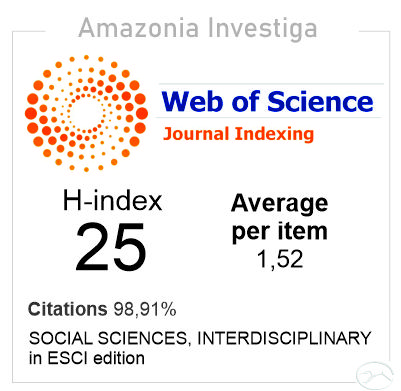



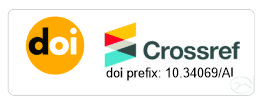
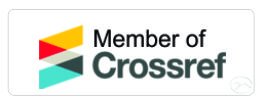


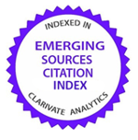
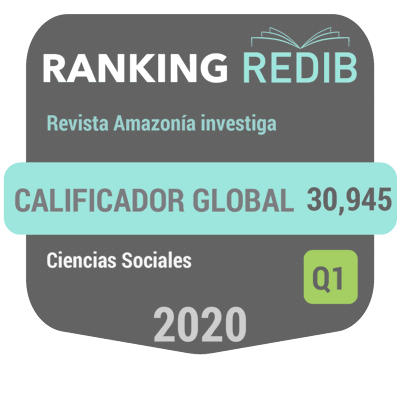
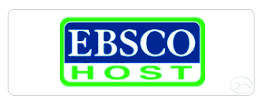






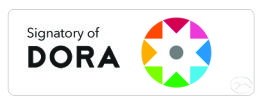
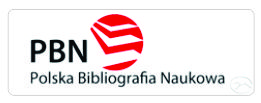







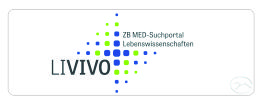
















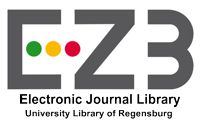

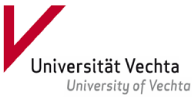



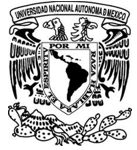










.gif)






